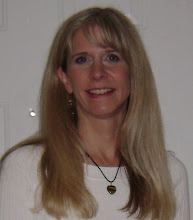Over the past two-and-a-half years, I’ve discovered that the road to authorship involves four main phases: reading, writing, rewriting and research.
Like any other form of art, it takes time to recognize the difference between the outstanding and the ordinary, the unadorned the and the overdone, and just how your writing compares. So what’s the best way to acquire this skill? Read, and read often. While studying a variety of literature helps increase vocabulary and refresh grammatical skills, it’s essential to read a myriad of material within the genre in which you wish to write. Doing so not only provides information about what’s already written on certain topics and the latest trends, but also renders a feel for that style of writing.
The next step toward authorship is the obvious: write, write and write some more! Just as any other craft, becoming a proficient composer takes practice and plenty of it. One of the best parts about this is that there are so many mediums in which to do so. On days that my muse has meandered, I find catching up with friends through email and spending time on other projects, like this blog, helpful. There are also websites such as www.goodnightstories.com
which allow writers to hone their skills, not to mention numerous classes and literature on the subject. One book I highly recommend is “Writing for Children & Teens” by Cynthea Liu.
Next comes rewriting. Although I began creating stories just two-and-a-half years ago, I’ve already noticed an increase in the quality of my creations. One way to observe advancement is by filing a manuscript away and not viewing it for at least four months. By that time it’s amusing how easy it is to spot mistakes, (provided you’ve continued to practice during this period). Another good way to track progress is by joining a critique group. Members read each other’s manuscripts and offer comments and suggestions as to what they feel are the story’s strong points and those that may need tweaking. It’s also an excellent way to meet and share enthusiasm for the art with like minded individuals, a real plus to what can otherwise become a lonely pursuit.
Researching the market, the final process toward publication, is as absorbing as writing itself. It’s not just a matter of finding a publisher’s address. First, it’s important to know which publishers are open to unsolicited manuscripts and which accept books in the genre your story’s written. For this information, I refer to the Children’s Writer’s and Illustrator’s Market. Most publishers also have a website which includes submission details. But be forewarned and read guidelines carefully! Some publishers wish to receive only non-fiction while others want just fiction. Then there are those looking for very specific material such as regional based stories.
Another reliable way to learn about publishers, trends, editors and agents is through various newsletters including the Children’s Book Insider http://www.write4kids.com/, Children's Writer http://www.childrenswriter.com/, and the Society of Children's Book Writers and Illustrators Bulletin http://www.scbwi.org/.
These publications are not only packed with industry information, they also lend reference to other useful sites and sources.
So there it is. It’s a long road--sometimes uphill, sometimes down. Some days you’ll find yourself racing with the wind, the words forming faster than you can type. Then there will be others when you get side tracked on the scenic route with an overload of adjectives and run out of gas. You may even find yourself in a ditch a time or two, but don’t give up! Trust your vehicle of creativity and eventually it will drive you just where you want to go. Happy travels!

This is great information for writers Lisa. Thanks so much for sharing.
ReplyDelete